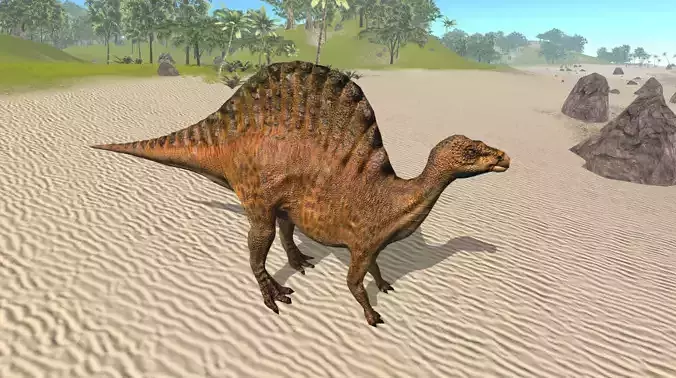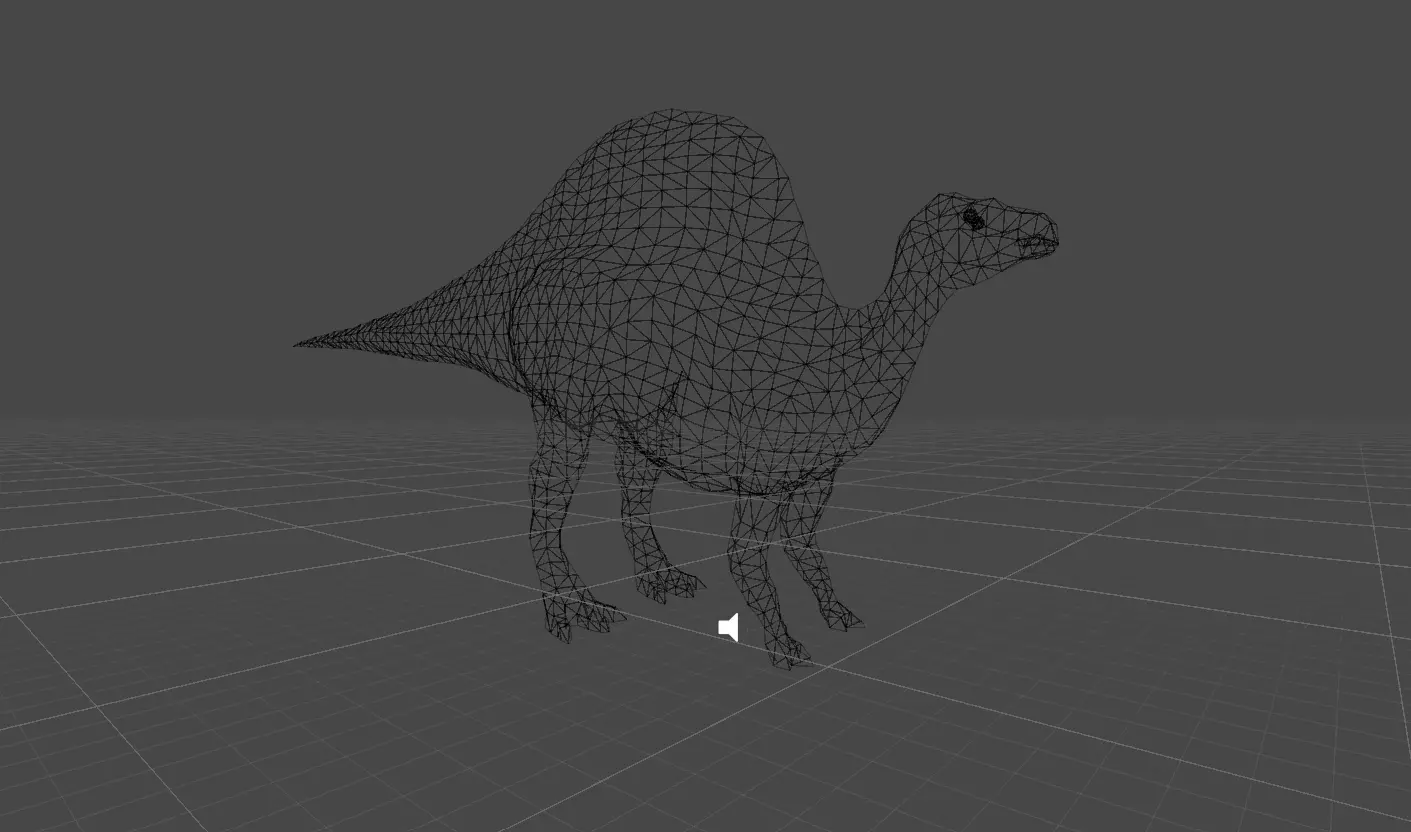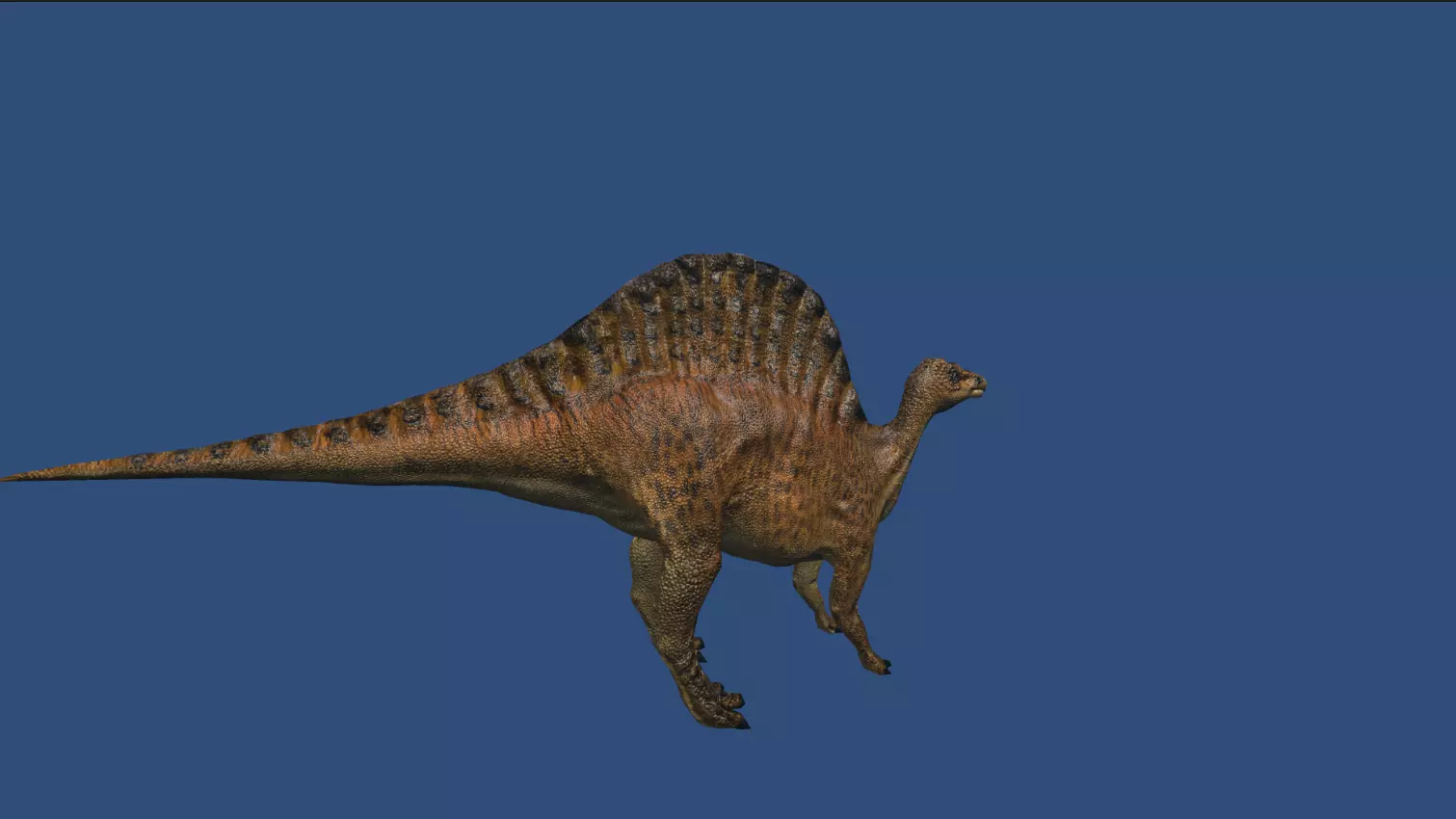
Ouranosaurus Animated Model Low-poly 3D model
The creature before us closely resembles Ouranosaurus, a unique dinosaur from the Early Cretaceous period. Standing on four sturdy legs but capable of moving on two, this herbivorous reptile had a long, narrow snout with rows of teeth designed for grinding tough vegetation. Its most distinctive feature was the tall neural spines along its back, forming a sail-like structure or possibly a hump. This adaptation may have been used for thermoregulation, fat storage, or display to other dinosaurs. With a body length of up to 7 meters, Ouranosaurus combined agility with resilience, thriving in the warm floodplains of what is now North Africa.
In appearance, this Ouranosaurus-like creature carried a balance between grace and power. Its flat skull and beaked mouth hinted at efficient feeding habits, while its robust limbs and long tail provided stability. The large sail rising from its back gave it a striking silhouette, making it stand out among other herbivores. Covered in scaly skin, patterned for camouflage against prehistoric landscapes, it lived in herds, relying on numbers for protection against predators. The Ouranosaurus remains a fascinating example of dinosaur evolution, showing how survival shaped both form and function.
Animation:
- Idle
- Attack
- Head Attack
- Eating
- Run
- Walk
- Jump
- Tail Attack
- Swim



